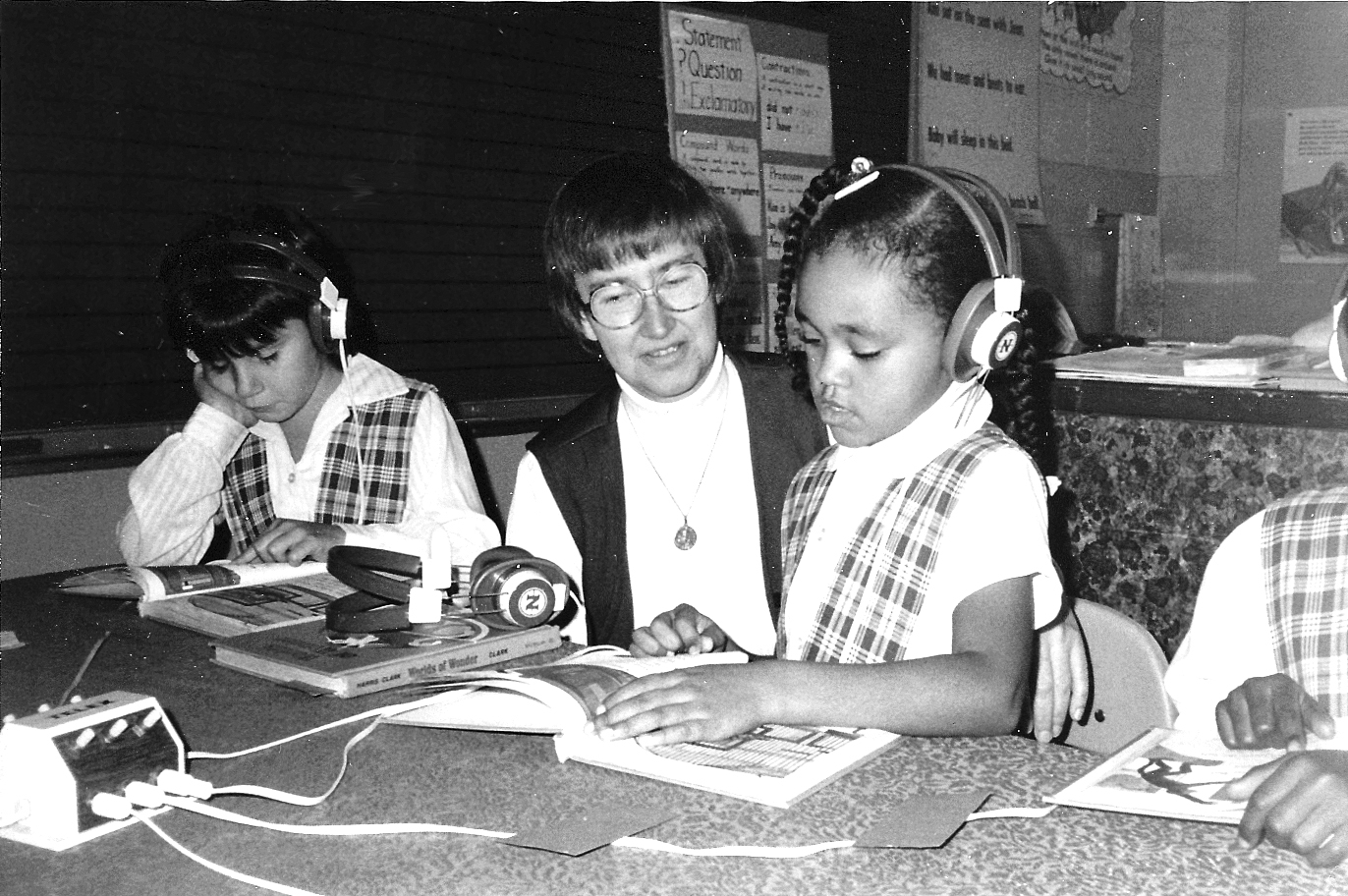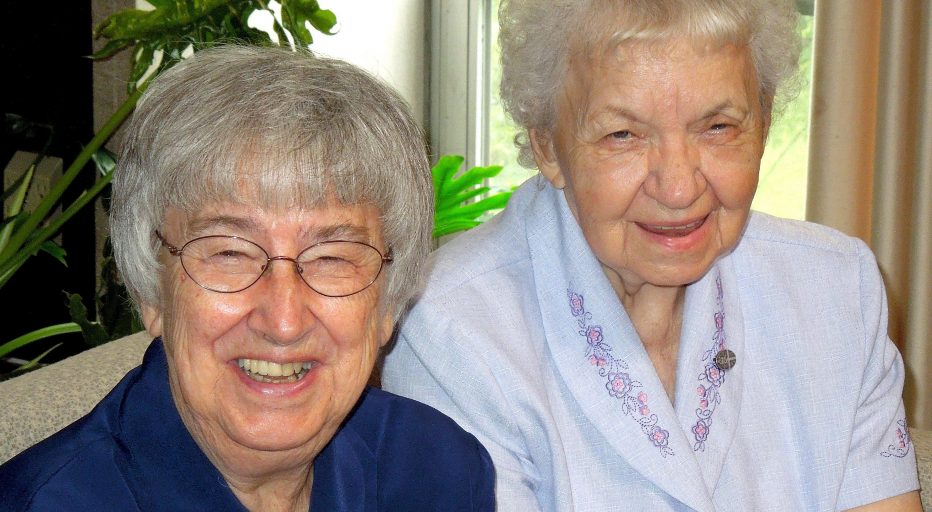Sisters of the Divine Savior Jean Marie Hauck and Joan Wagner turned the page on a combined 80 years of service at Holy Family School in Huntsville, Ala. In June 2018, they bid farewell to longtime friends, neighbors and generations of school families. As they slowly settled into our Salvatorian Sisters Residence (SSR) in Milwaukee, their deep sense of loss gradually eased. Today, they cherish the memories from their time in Huntsville.
Sr. Jean Marie first went to Huntsville in 1965 to teach third grade. Back then, Holy Family was known as St. Joseph Mission School, founded in 1956 to serve black families. After two years, Sr. Jean Marie was assigned to Maryland parochial schools for nearly 20 years. She returned to Huntsville in 1989, and taught art classes for seven years before retiring.
Sr. Jean Marie described changes on her return to Huntsville. “They had added a whole wing to the building and air conditioning. And, the playground was blacktopped so red mud didn’t get tracked into the classroom.” Another change was the ratio between black and white students – nearly equal by 1989. St. Joseph was the first all-black school in Alabama to admit white students. The “reverse integration” began in 1963 before Sr. Jean Marie arrived.
She notes, “St. Joseph families were determined to make it work.” She recalls a first-grader in Salvatorian Sister Fidelis’ class. “He went home and told his family he had the most wonderful friend. When his mother asked, ‘Is he black or white?’ he replied, ‘I don’t know. I’ll look tomorrow.’” After retiring, Sr. Jean Marie joined a group of quilters who made sleeping bags for homeless people in the Huntsville area. She also stayed connected with the school by using her artistic gifts to decorate the bulletin boards.
Sr. Joan (formerly Sr. John Bosco) arrived in Huntsville in January 1969. She taught first grade for 27 years before serving as administrative assistant in the late ‘90s. Substitute teachers had been filling in before she arrived, and Sr. Joan recalls, “My first priority was to get the children to where they needed to be in their studies. We had a lot of Nigerian children in our school, whose parents taught at Alabama A&M University.”
Sr. Joan says many parents of white students were employed with the Redstone Arsenal’s missile program, and were not native southerners. She recalls, “An arsenal bus brought children every day in the first years I was there.” She also remembers touring the arsenal where they tested rockets. From our school you could hear test rockets roaring from 15-20 miles away.”
Sr. Joan wasn’t in Huntsville in 1963, but the tumult of desegregation continued after she arrived. White non-Catholics tried to enroll their children at St. Joseph School because it was more racially balanced than Huntsville public schools. The Diocese of Birmingham would not allow the school to be a refuge for families trying to avoid the federal desegregation order. “Parents sued St. Joseph School for denying their children admission,” Sr. Joan says, “but our school won out.”
“On the way home we crossed a bridge over the Tennessee River. All along the river, lined up on the bridge, was the Ku Klux Klan robed in white. Our driver said, ‘Duck down.’ It scared me because attitudes were pretty much the same toward Catholics as toward blacks.”
Another incident Sr. Joan will never forget is a teachers’ convention in Birmingham. “On the way home we crossed a bridge over the Tennessee River. All along the river, lined up on the bridge, was the Ku Klux Klan robed in white. Our driver said, ‘Duck down.’ It scared me because attitudes were pretty much the same toward Catholics as toward blacks. That was my first – and only – experience with the KKK.”
In 1979, St. Joseph, St. Mary’s and Mary Queen of Universe parishes merged their grade schools to become Holy Family School. Merging the student bodies furthered reverse integration far more peaceably than the school desegregation mandate. Even with a new name, the spirit of the original mission school has endured. Sr. Joan says parents always were and still are very much committed to the school. She says that along with ethnic diversity, Holy Family students come from many faith traditions. The local community holds the school’s strong academic reputation in high regard.
As for St. Joseph Parish, Sr. Joan says, “Over the years it’s grown, and although it’s not a large parish, it’s thriving.” Sr. Jean Marie adds, “It was never known as a wealthy parish, but people were very generous. When something needed to be done, they were always there.”
That commitment is the legacy Sisters Jean Marie and Joan left behind in Huntsville. Today, Sr. Joan’s image is one of four stained glass windows above the front door of the church. Along with the Salvatorian co-founders, Mother Mary and Father Jordan, and St. Joseph Parish founder Fr. Hermenegild Messmer, SDS, there also is Sr. Joan. “So my picture is there until the window breaks,” says Sr. Joan, but she doesn’t take the honor lightly. Looking back on her decades serving in Huntsville, Sr. Joan (pictured below) says, “I loved it there.”

— Jan Penlesky
